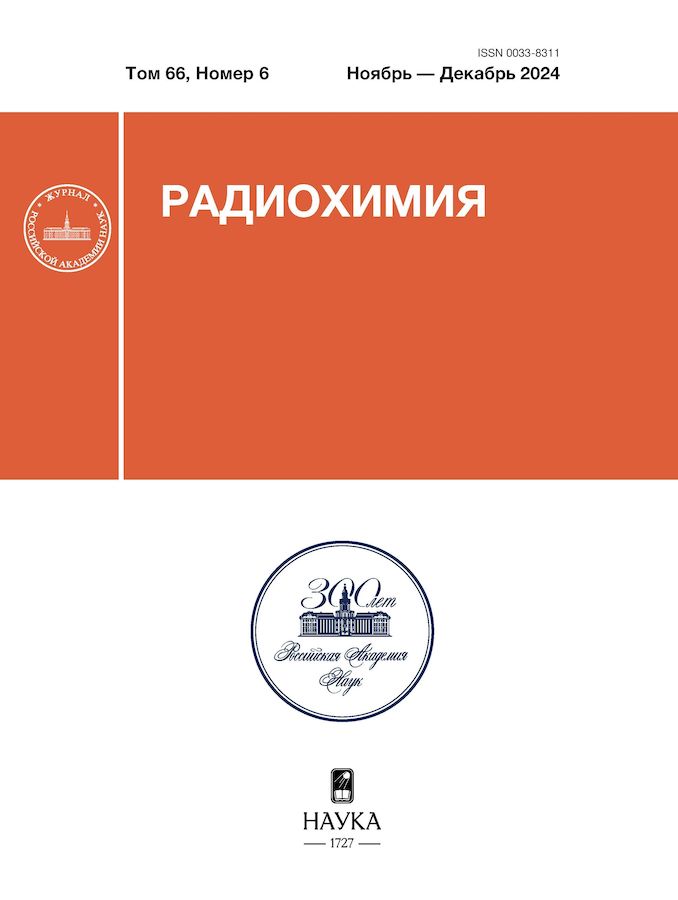Deuterium labeling of dopaquine
- 作者: Shevchenko V.P.1, Nagaev I.Y.1, Shevchenko K.V.1, Myasoedov N.F.1
-
隶属关系:
- National Research Centre Kurchatov Institute
- 期: 卷 66, 编号 6 (2024)
- 页面: 589-595
- 栏目: Articles
- URL: https://ter-arkhiv.ru/0033-8311/article/view/681273
- DOI: https://doi.org/10.31857/S0033831124060101
- ID: 681273
如何引用文章
详细
The possibility of introducing deuterium into dopaquine, a compound consisting of quinone and dopamine fragments, has been studied. It has been established that isotope exchange can be carried out with deuterated water in the presence of trifluoroacetic acid (TFA) and HCl. Optimal conditions are the use of TFA at a temperature of 80°С. To activate isotope exchange, catalysts based on iridium or palladium (5%Pd/Al2O3, cycloocta-1,5-dienylyridium(I) 1,1,1,5,5,5-hexafluoropentane-2,4-dionate) were added to the reaction mixture in addition to the acid component. The preparative synthesis of [D]dopaquine was carried out by isotope exchange with deuterated water (D2O : TFA 5 : 1, 80°С, 3 h). [D]Dopaquine was obtained in 20% yield of with the deuterium content in the interval 1.2–1.4 atoms per molecule. The deuterium content in the dopamine fragment is 1.2–1.3 atoms per molecule. The quinone fragment contained approximately 4–7% of the isotope.
全文:
作者简介
V. Shevchenko
National Research Centre Kurchatov Institute
Email: nagaev.img@yandex.ru
俄罗斯联邦, Moscow
I. Nagaev
National Research Centre Kurchatov Institute
编辑信件的主要联系方式.
Email: nagaev.img@yandex.ru
俄罗斯联邦, Moscow
K. Shevchenko
National Research Centre Kurchatov Institute
Email: nagaev.img@yandex.ru
俄罗斯联邦, Moscow
N. Myasoedov
National Research Centre Kurchatov Institute
Email: nagaev.img@yandex.ru
俄罗斯联邦, Moscow
参考
- Гюнтер Х. Введение в курс спектроскопии ЯМР. М.: Мир, 1984. 478 с.
- Pajak M., Kanska M. // J. Label. Compd. Radiopharm. 2006. Vol. 49. N 12. P. 1061–1067. https://doi.org/10.1002/jlcr.1123
- Kozlowska M., Kanski R., Kanska M. // J. Label. Compd. Radiopharm. 2005. Vol. 48. N 3. P. 235–240. https://doi.org/10.1002/jlcr.919
- Gerdes G., Chen P. // Organometallics. 2004. Vol. 23. N 12. P. 3031–3036. https://doi.org/10.1021/om030685m
- Ziatdinov V.R., Oxgaard J., Mironov O.A., Young K.J.H., Goddard W.A., Periana R.A. // J. Am. Chem. Soc. 2006. Vol. 128. N 23. P. 7404–7405. https://doi.org/10.1021/ja060973k
- Lockley W.J.S. // J. Label. Compd. Radiopharm. 2010. Vol. 53. N 11–12. P. 668–673. https://doi.org/10.1002/jlcr.1806
- Kingston L.P., Lockley W.J.S., Mather A.N., Spink E., Thompson S.P., Wilkinson D.J. // Tetrahedron Lett. 2000. Vol. 41. N 15. P. 2705–2708. https://doi.org/10.1016/S0040-4039(00)00244-6
- Di Giuseppe A., Castarlenas R., Perez-Torrente J.J., Lahoz F.J., Polo V., Oro L.A. // Angew. Chem. Int. Ed. 2011. Vol. 50. N 17. P. 3938–3942. https://doi.org/10.1002/anie.201007238
- Di Giuseppe A., Castarlenas R., Perez-Torrente J.J., Lahoz F.J., Oro L.A. // Chem. Eur. J. 2014. Vol. 20. N 27. P. 8391–8403. https://doi.org/10.1002/chem.201402499
- Evchenko S.V., Kamounah F.S., Schaumburg K. // J. Label. Compd. Radiopharm. 2005. Vol. 48. N 3. P. 209–218. https://doi.org/10.1002/jlcr.916
- Куликова О.И., Стволинский С.Л., Федорова Т.Н., Адаева О.И., Демчук Д.В., Семенов В.В. Патент RU 2814111. Опубл. 22.02.2024 // Б.И. 2024. № 6.
- Shevchenko V.P., Nagaev I.Yu., Myasoedov N.F. // Radiochemistry. 2024. Vol. 66. N 3. P. 372–376. https://doi.org/10.1134/S1066362224030111
补充文件














